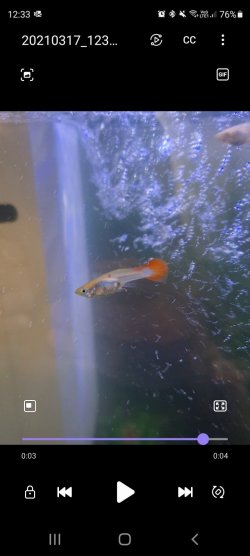Just got a quick question to see if anyone has experience of this problem I'm facing.
My female guppy started to have red blotches appear on her sides (pict attached). After looking at the other forum posts and answers, it kept pointing to either an ammonia or nitrate problem. This can't be the issue though as both those markers in my 110l tank are at the right condition. I even had it double checked at a store as didn't want to rely on the dip sticks. The only thing they said was slightly high was water hardiness where I could use a little more of the tap safe when doing my water changes but that it wouldn't have much of an impact on fish life.
I change my water weekly and hoover the stones etc to keep it all maintained. The fish doesn't appear to be acting any different than normal. Now posting onto this forum as I've noticed a second female guppy developing a similar blotch on her head.
Any advice on this as I do want to get more community type fish for the tank but not if there is some issue going on that might risk their welfare.
Thanks in advance
My female guppy started to have red blotches appear on her sides (pict attached). After looking at the other forum posts and answers, it kept pointing to either an ammonia or nitrate problem. This can't be the issue though as both those markers in my 110l tank are at the right condition. I even had it double checked at a store as didn't want to rely on the dip sticks. The only thing they said was slightly high was water hardiness where I could use a little more of the tap safe when doing my water changes but that it wouldn't have much of an impact on fish life.
I change my water weekly and hoover the stones etc to keep it all maintained. The fish doesn't appear to be acting any different than normal. Now posting onto this forum as I've noticed a second female guppy developing a similar blotch on her head.
Any advice on this as I do want to get more community type fish for the tank but not if there is some issue going on that might risk their welfare.
Thanks in advance




